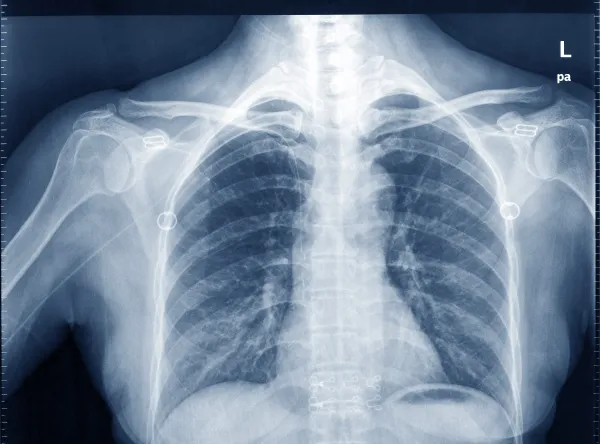Pulmonology Coding Alert
Get the Scoop: Part B MAC Rep Outlines the Top Errors, Questions It Sees
Got questions about denials? You’re not alone.
Your pulmonology practice likely has Medicare claim questions on a daily basis — which means that most other medical providers are probably in the same boat. And the Part B MACs field queries every day from medical offices about some of the same issues, so it can be beneficial to understand the common queries those MACs see. Once you get the answers to the most frequently-asked questions they field, you may have some of your coding and billing issues solved.
Noridian Healthcare Solutions’ Carynne Godfrey shared this information during the Part B MAC’s Oct. 24 webinar entitled “Top Provider Inquiries and Solutions.” Read on to get a handle on some of the highlights, which could benefit your pulmonology practice.
Invalid CPT® Codes Are Common
“One of the top coding errors that we see is an invalid CPT® code,” Godfrey said. These can include services that are non-covered, invalid for Medicare, or bundled.” To halt these types of denials, you can go to the Medicare Physician Fee Schedule, where you can review the indicators and descriptors for a specific code. “If you see that it has a ‘B’ for the claim indicator, then you’ll see that it’s a bundled code and it’s not going to be paid separately for Medicare,” she said.
In the Fee Schedule, you’ll also find the bilateral indicators, whether physician assistants can be employed during surgery, whether a multiple procedure reduction exists, and more.
E/M Modifiers Prompt Frequent Errors
Another frequently-seen issue is the incorrect use of an E/M modifier. “The most common issue we see is with modifiers 24 (Unrelated evaluation and management service by the same physician or other qualified health care professional during a postoperative period), 25 (Significant, separately identifiable evaluation and management service by the same physician or other qualified health care professional on the same day of the procedure or other service), and 57 (Decision for surgery) being billed on the surgical code itself and not on the E/M code,” she said. “Always make sure you’re appending E/M modifiers to the actual E/M code,” she added.
In addition, Noridian also sees the E/M modifiers being used incorrectly, such as modifier 57 being used on an E/M code when it’s reported with a procedure code that has a zero-day global period. In reality, modifier 57 applies only to E/M services billed on the same date as procedures with 90-day global periods.
Missing Modifiers Create Issues
Another area that prompts claim denials involves missing modifiers, Godfrey said. “Unbundling modifiers represent a big area here,” she said. The claim could deny because a modifier wasn’t appended to a code pair that is bundled, but which can be billed together in certain circumstances. To find the National Correct Coding Initiative (NCCI) information, you can use the CMS website, she advised. Once you identify the edits that bundle certain codes together, you can investigate whether a modifier can separate the codes, which will help guide you when submitting claims that include these codes.
She advises practices to investigate the global surgical periods of every procedure they’re planning to report. “This is good to know so you can find out if there’s a modifier you need to append before billing so you don’t get a denial,” she added.
Medicare Secondary Payer Issues Abound
Noridian also sees a lot of issues with Medicare Secondary Payer (MSP) claims. “If you see the error that’s an Invalid MSP Type, that means the MSP code you’re billing is different from what we have on file for that beneficiary.” Depending on what type of insurance that patient has, the MSP Type will be different, she said. If you report the incorrect MSP Type, you can request a reopening and change the MSP Type, she said.
In other cases, MSP information is missing from a claim. “When you’re billing a paper claim, if the patient does not have another insurance, you need to enter the word ‘none’ in box 11 of the paper claim,” she said. “This error happens very often, and it will deny. This doesn’t apply to electronic claims.”
In other cases, the practice will put the word “none” in box 11, but the patient actually does have other insurance. “It’s your responsibility as a provider to verify that information,” she noted.
If you do file an MSP claim, you’ll need to attached a copy of the primary EOB to your claim. “We can’t pay as a secondary payer without knowing what the primary insurance paid,” she said. “It needs to be a clear, legible copy, and must have the same date of service as the claim date of service. We often see an EOB for the wrong patient or with a different date of service, so you need to make sure that information is there.”
Check These Commonly-Asked Questions
In addition to its most frequent denial reasons, the MAC also shared the questions that providers frequently ask. “The most common payment question we get asked has to do with the applied deductible,” Godfrey said. “Sometimes you’ll receive a Remittance Advice (RA) showing the claim is being paid but at a $0 amount. This is usually due to those monies being applied to that patient’s deductible. You can see this on the RA itself, and it most often happens at the beginning of the year,” she said.
Another common question arises when a claim is processed and doesn’t pay anything because the money instead goes to the patient. “If you don’t accept assignment in item 27 of the claim form, or if there’s any dollar amount in item 29, the claim will pay to the patient,” Godfrey said. “Item 29 is only for the amount the patient has paid. If this is a secondary claim, do not put the primary insurance information into box 29. If either of those boxes has information in it, the money is going to be paid to the patient.”
Providers also call the MAC to ask about postoperative care claims, which occur when one surgeon performs the actual surgery, but another physician takes over the postoperative care. For instance, if a thoracic surgeon performs a lung volume reduction surgery in another town where a large hospital is located, and then the patient returns to her hometown for the rest of the postoperative period, where the pulmonologist handles the postoperative care.
“Often these claims will involve missing modifiers 54 (Surgical care only) or 55 (Postoperative management only); sometimes the postop physician will report a different code than the surgeon, or the wrong modifier. The codes and modifiers for the postop care provider must match the same codes and modifiers the surgeon reports,” she said. In addition, the date of service should be the date of surgery — not the date you took over care. The postop and surgery claims must have matching dates of service.
In item 19, however, the postop provider should include the date span of care. “If you don’t include a date span, we don’t know how many days of postop care you performed, so we can’t pay you for it,” Godfrey noted. “Those are all manually calculated — how many days you’re billing leads to how much each physician gets paid. So the date span is very important.”
Duplicate claims can also present problems. “Billing multiple claims for the same date of service is very common,” Godfrey said. “It could be that you rebilled instead of reopening a claim, it could be that the claim is applied to the deductible and that didn’t get noticed on a remittance advice.” If you know that you submitted a claim and you’re just seeking claim status, don’t resubmit the claim, she advised. Instead, go to the MAC portal and check the status of the claim there.
Related Articles
Pulmonology Coding Alert
- HCPCS Coding:
Foolproof Your J7613 Coding With These Tips
CMS lists J7613 as last year’s most-billed code. When most pulmonology practices think of their [...] - Part B Coding:
Get the Scoop: Part B MAC Rep Outlines the Top Errors, Questions It Sees
Got questions about denials? You’re not alone. Your pulmonology practice likely has Medicare claim questions [...] - Imaging:
Check These Special Circumstances When Coding Chest X-rays
Curious about how to code a chest X-ray when a line is placed? Find out [...] - You Be the Coder:
Remember: Medicare Advantage Isn't Supplemental Policy
Question: We have a patient with a Medicare Advantage secondary/supplemental policy. We are unable to [...] - Reader Question:
Give Patients Their Medical Records
Question: We had a patient ask for her medical records and we misplaced the request [...] - Reader Question:
Use Double the Codes When You See 2 Patients
Question: Can we bill based on time if we see two patients during the same [...] - Reader Question:
Look to “J” Series for This COPD Solution
Question: A patient who we diagnosed with COPD last year presented to our office last [...]




